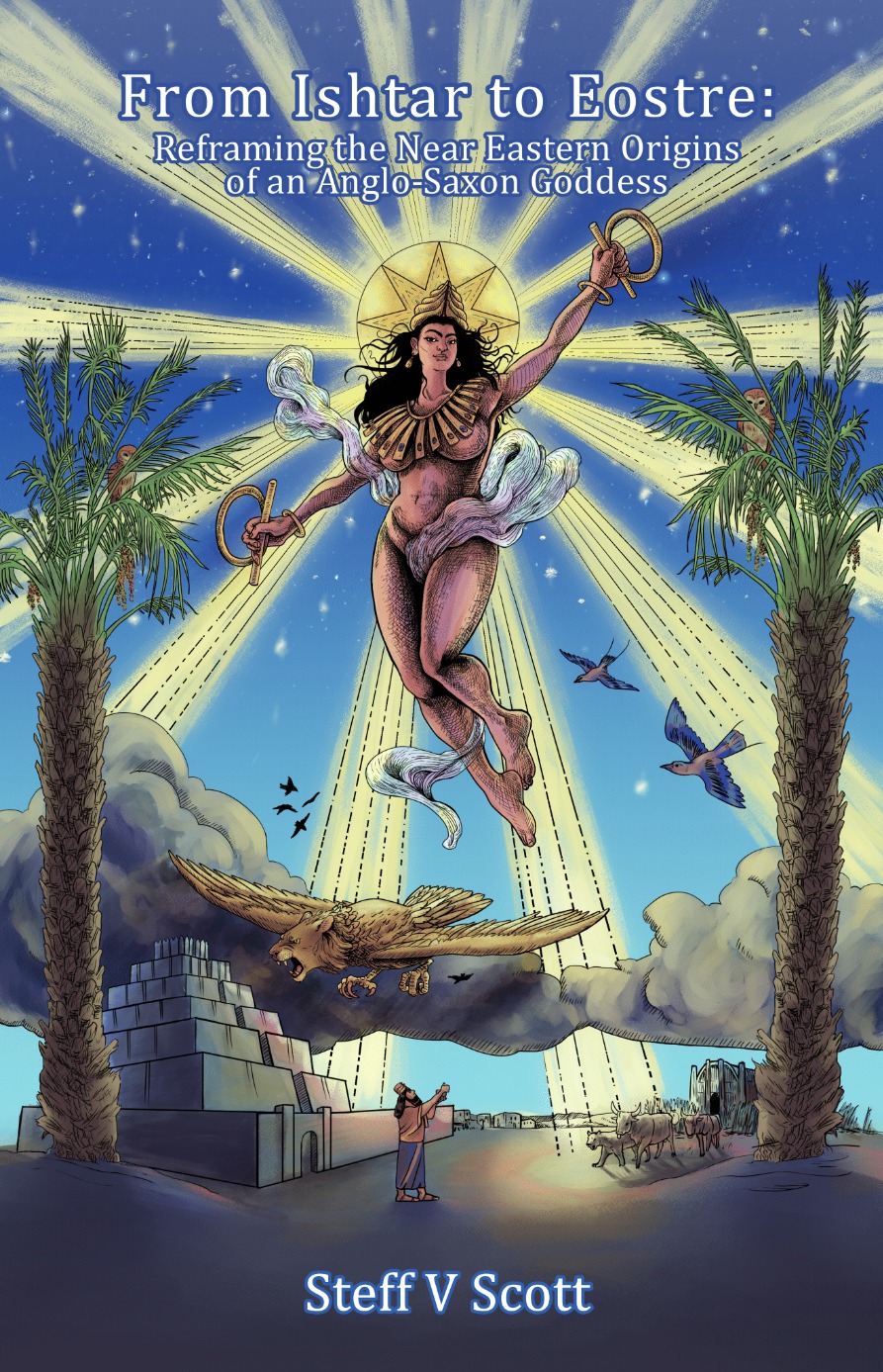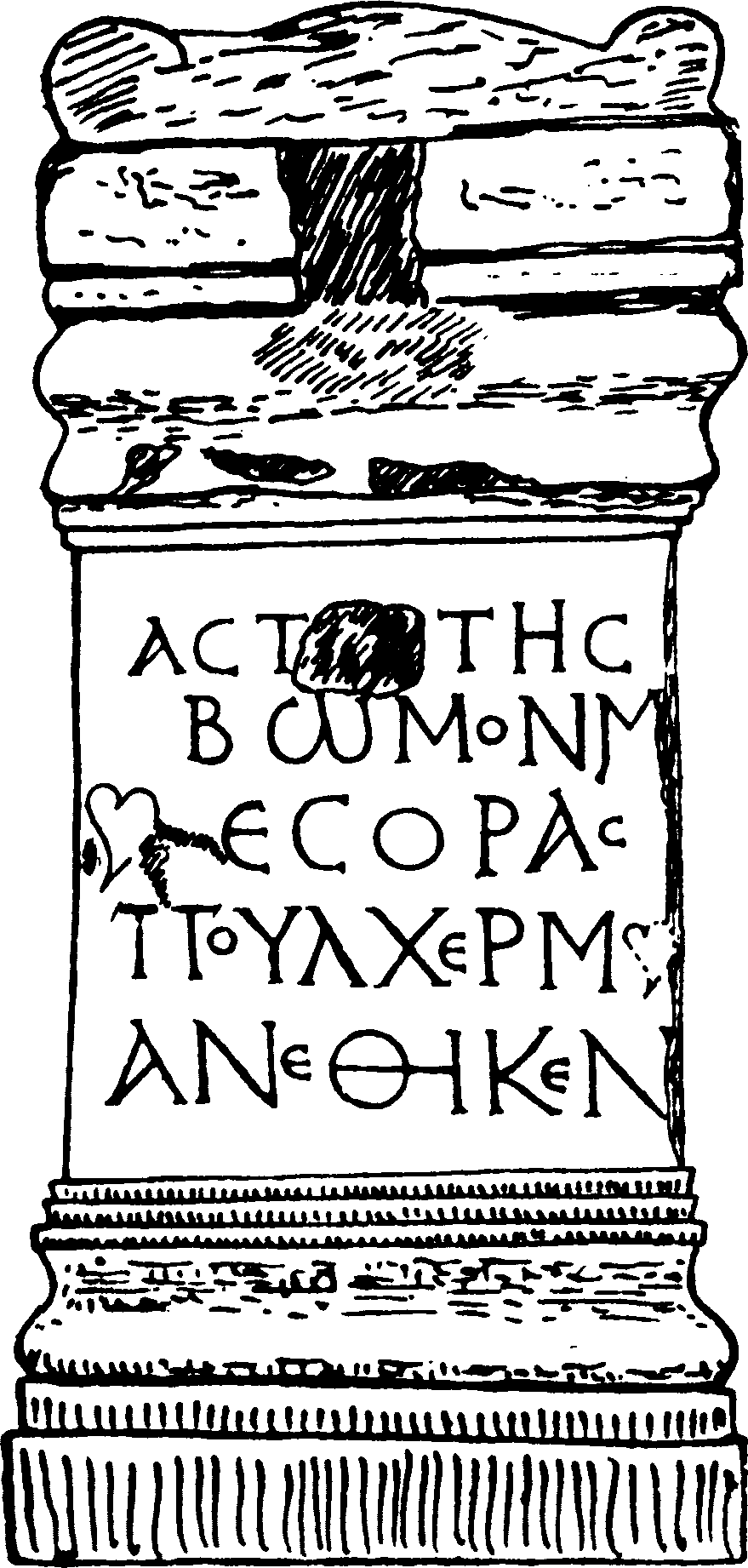A new book raises some interesting and controversial questions and commentary about the goddess Ēostre. TWH had a chat with the author, Steff V Scott, about From Ishtar to Eostre: Reframing the Near Eastern Origins of an Anglo-Saxon Goddess.
Ēostre, also known as Ostara, is a West Germanic goddess related to the season of spring. A Germanic month, Ôstarmânoth (Ēosturmōnaþ in the Northumbrian dialect of Old English) bears her name. The name also inspired the name of the holiday Ostara in the modern Pagan wheel of the year.
The English monk, the Venerable Bede, attests to Ēostre in his eight century treatise The Reckoning of Time. Bede mentions that the Paschal season bears her name and, seemingly referencing the Christian celebration of Easter, noting of the celebrants that “Now they designate that Paschal season by her name, calling the joys of the new rite by the time-honoured name of the old observance,” according to Faith Wallis’s translation.
Steff V Scott has spent some time on this question of Ēostre and her origins. When I asked about what brought about this topic, Scott answered jokingly, “I’m actually a concerned citizen.”

From Ishtar to Eostre: Reframing the Near Eastern Origins of an Anglo-Saxon Goddess [Courtesy]
Scott is well-qualified to look at these questions. They are the founder of the Temple of Inanna and have served as the interfaith officer and presiding officer of the Scottish Pagan Federation. Scott is a prominent Pagan rights activist and was the first Pagan ever to be elected to the role of chair of a regional interfaith organisation in his home country. Scott’s studies include the archaeology of the Near East and the archaeology of ritual and magic at the University of Glasgow and the University of Edinburgh. Their specific interest is the diffusion and migration of deities.
Scott said that their interest in this topic brought them to look carefully at how the ancient world understood its gods and goddesses. “Understanding these things from a historical perspective,” they said, “rather than or skewed Western perspective, and one that has been shaped through a monotheistic lens. So I pretty much read every academic paper on the subject.”
During their research, Scott says that they found an obscure reference noting that “the goddess Astarte had actually been venerated in Britain, and it immediately sparked my interest – though it gave no information, just a reference to a very old academic paper dating to the 1900s,” Scott said. “That was where my search began.”
In their new book by Eanna Press, From Ishtar to Eostre, Scott explores Ēostre and offers some hypotheses about her connection to goddess Ishtar-Astarte. The book is the result of five years of research as both a scholar and a Mesopotamian polytheist. “For the past few years,” they note, “I have been travelling the length and breadth of Britain, visiting and photographing her many altars on these shores. The first of which is only a fifteen-minute journey from where the Venerable Bede wrote about the Goddess Eostre.”
Scott organizes the evidence on the spread and influence of the Goddess Ishtar-Astarte from the Near East into the West. They split the book into two parts. “The first part is my journey to find the Near Eastern links to Eostre,” they said. “The second part is my treatise on Deity diffusion, which is the real beating heart of the book.”
When I asked about the Romans as the conveyers of Ishtar-Astarte to the West, Scott said, “The Romans, yes. Though she first crossed the Mediterranean under the Phoenicians. And it was from the Phoenicians that she first reached Rome, as well as Cyprus, Tangier, Sardinia, Malta, Sicily, North Africa, Spain, and Portugal.”
Scott notes that the Roman Empire was multicultural, not just people from modern-day Italy. Other cultures were absorbed into the Roman Empire and their practices were not necessarily eliminated. “One of those was from Syrian-born Roman soldiers,” they said, “as well as with the professional military unit of the Cohors I Hamiorum, a regiment 500 strong of these Syria auxiliary forces who came to Britannia around the 1st and 2nd century CE, bringing their Gods and Goddess with them. At one point Britain was awash with Eastern Gods, as well as the Gods of Rome, Greece, Egypt, and a great many other civilisations.”
I asked about Christians also, given a mention in Jeremiah 7:18 of making cakes as offerings for the queen of heaven. “Funny you should mention it,” Scott responded. “That’s a difficult question to answer. Were Christians involved in the spread of her worship? Christians certainly still venerated her, and in several places, most notably North Africa, as we have church records trying to stamp it out. The one that I find most amusing is by Salvian, the fifth century Christian writer, who complains of Christians going to her services both before and after church,” they added.
Scott also addresses some misogyny in resistance to accepting the spread of Ishtar into the West. “I find it a little sexist, if I’m perfectly honest,” they said. Scott notes that we obviously and unquestionably recognize Jesus as having Near East origins. “We also accept it unquestionably when we have altars to other Near Eastern male gods, such as Mithras and Baal,” they added, “yet when someone even suggests a Near Eastern goddess could travel using the same routes, and who was venerated in the very same location as Jesus, then people lose their minds!”
Scott added that Ishtar “was a Goddess who granted kingship, a role which elevated her on high.” They underscored in our conversation the tremendous power and influence of Ishtar as a major goddess. “In the ancient world, Ishtar was pretty much a political powerhouse of a goddess. In Mesopotamia alone she had over 190 temples dedicated to her, while the Mesopotamian Mother Goddess Ninhursag only had 21,” they said. “Even the highest god of the pantheon, Enlil, had a fraction of the temples Ishtar did. She was a goddess elevated above all others, and for most of her worship.”

One of the altar descrine in Scott’s book : Drawn by R.G.C., 1922, and I. A. Richmond, 1942. The inscrption reads “You see me, an altar of Astarte; Pulcher set me up.”
As for the connection to Ēostre, Scott lays out the migration with citations as well as describes altar locations in Britain beginning with Hexham Abbey in Northumberland. Bede wrote at Monkwearmouth visited Hexham Abbey often. “So much so,” Scott notes, “they have a stained glass window of him in the place.”
“There are seven altars to the Goddess Ishtar-Astarte in Britain under her name, titles or epithets, and all linked to other Near Eastern Gods,” Scott said. “The first five of which are found along Hadrian’s Wall, with two very close to where the Venerable Bede was stationed.”
The new book is not without controversy, as Ēostre is subsequently mentioned in Romantic works, and resurrecting any connection of Ishtar to Easter, or Ishtar’s migration out of the Middle East, raises academic and theological questions. Scott notes “that the intent of the book is not to prove Eostre’s origins were indeed Ishtar-Astarte,” or connect to Easter, for that matter. Instead, the book is about investigating the issue and offering a fresh look at the evidence.
📚 📕 📚
From Ishtar to Eostre: Reframing the Near Eastern Origins of an Anglo-Saxon Goddess by Steff V. Scott is available worldwide in hardcover and paperback. A digital edition is planned but not yet available.
To join a conversation on this post:
Visit our The Wild Hunt subreddit! Point your favorite browser to https://www.reddit.com/r/The_Wild_Hunt_News/, then click “JOIN”. Make sure to click the bell, too, to be notified of new articles posted to our subreddit.
The Wild Hunt is not responsible for links to external content.
To join a conversation on this post:
Visit our The Wild Hunt subreddit! Point your favorite browser to https://www.reddit.com/r/The_Wild_Hunt_News/, then click “JOIN”. Make sure to click the bell, too, to be notified of new articles posted to our subreddit.